Best Forties Adventure
By:
October 13, 2013
NOTE: This post has been superseded by HILOBROW’s 100 Best Adventures of the Forties page.
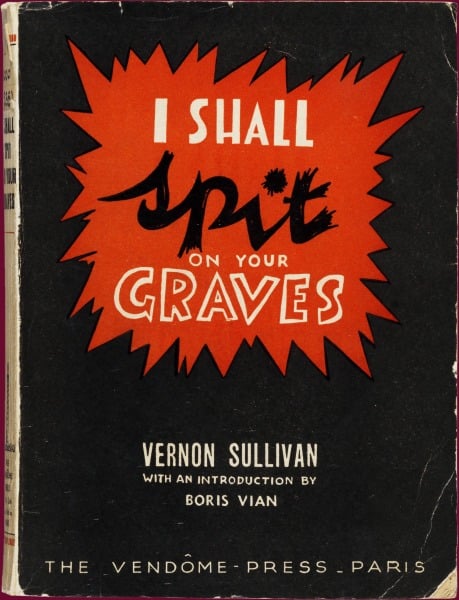
The Best Adventure series of posts will list my favorite 21 adventure novels from each of the 20th Century’s first eight (socio-cultural) decades. Plus, I kicked off the series with a list of the Top 32 adventures from the 19th Century; in total, then, I aim to list 200 of my all-time favorite adventures.
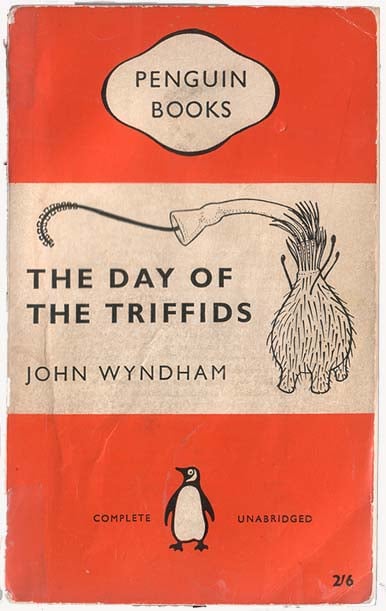
JOSH GLENN’S *BEST ADVENTURES* LISTS: BEST 250 ADVENTURES OF THE 20TH CENTURY | 100 BEST OUGHTS ADVENTURES | 100 BEST RADIUM AGE (PROTO-)SCI-FI ADVENTURES | 100 BEST TEENS ADVENTURES | 100 BEST TWENTIES ADVENTURES | 100 BEST THIRTIES ADVENTURES | 75 BEST GOLDEN AGE SCI-FI ADVENTURES | 100 BEST FORTIES ADVENTURES | 100 BEST FIFTIES ADVENTURES | 100 BEST SIXTIES ADVENTURES | 75 BEST NEW WAVE SCI FI ADVENTURES | 100 BEST SEVENTIES ADVENTURES | 100 BEST EIGHTIES ADVENTURES | 75 BEST DIAMOND AGE SCI-FI ADVENTURES | 100 BEST NINETIES ADVENTURES (in progress) | 1994 | 1995 | 1996 | 1997 | 1998 | 1999 | 2000 | 2001 | 2002 | 2003 | NOTES ON 21st-CENTURY ADVENTURES.
20 ADVENTURE THEMES AND MEMES: Index to All Adventure Lists | Introduction to Adventure Themes & Memes Series | Index to Entire Series | The Robinsonade (theme: DIY) | The Robinsonade (theme: Un-Alienated Work) | The Robinsonade (theme: Cozy Catastrophe) | The Argonautica (theme: All for One, One for All) | The Argonautica (theme: Crackerjacks) | The Argonautica (theme: Argonaut Folly) | The Argonautica (theme: Beautiful Losers) | The Treasure Hunt | The Frontier Epic | The Picaresque | The Avenger Drama (theme: Secret Identity) | The Avenger Drama (theme: Self-Liberation) | The Avenger Drama (theme: Reluctant Bad-Ass) | The Atavistic Epic | The Hide-And-Go-Seek Game (theme: Artful Dodger) | The Hide-And-Go-Seek Game (theme: Conspiracy Theory) | The Hide-And-Go-Seek Game (theme: Apophenia) | The Survival Epic | The Ruritanian Fantasy | The Escapade
ALSO: See my friend Sarah Weinman’s website about women crime writers of the 1940s–50s.
This is the sixth post in the series. Here you’ll find a list of my Top 21 Adventures from the Forties (1944–1953).
ALSO SEE: Golden Age Sci-Fi: 75 Best Novels of 1934–1963
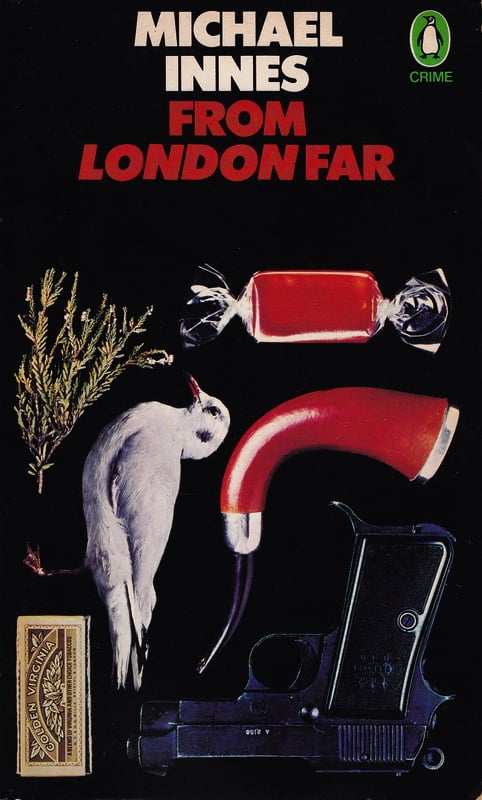
In his 1944 treatise The Condition of Man, Lewis Mumford (inadvertantly) offers a prescient critique of the following decade’s adventure literature: “The last thirty years have been witnessing the active disintegration of Western civilization…. Everywhere the machine holds the center and the personality has been pushed to the periphery. … We can no longer live, with the illusions of success, in a world given over to devitalized mechanisms, de-socialized organisms, and depersonalized societies: a world that had lost its sense of the ultimate dignity of the person.” Adventure published between 1944 and 1953 is anxious. This is the era during which hardboiled gives way to noir — that is, gives way to adventure in which the protagonist is usually not a detective, but instead a victim, a suspect, or even a perpetrator.
Buchan-esque romantic adventure mostly returns, during this period, to the ghetto of children’s literature and fantasy from which he’d helped rescue it three decades earlier. This development was good news for the era’s best children’s adventures — E.B. White’s Stuart Little, Robert Lawson’s The Fabulous Flight, Astrid Lindgren’s Pippi Longstocking, Eric Linklater’s The Wind on the Moon, Robert Heinlein’s Red Planet — which are as smart, funny, and exciting as it gets. Fantasy also entered a Golden Age during the Forties: J.R.R. Tolkien’s The Lord of the Rings, C.S. Lewis’s Narnia series, Poul Anderson’s Three Hearts and Three Lions, Mervyn Peake’s Gormenghast series, Henry Kuttner’s The Dark World, Maurice Richardson’s The Exploits of Engelbrecht.
The cynical, un-Buchanesque adventure (e.g., by Graham Greene, Jim Thompson, George Orwell, Kenneth Fearing, Patricia Highsmith, Mickey Spillane) published during this period is bracing stuff — I recommend it highly. But even more fascinating and entertaining are the era’s Buchan-esque yet ostensibly anti-romantic adventures, many of them by Scots: Helen MacInnes’s The Unconquerable, Hammond Innes’s The White South (et al.), Geoffrey Household’s A Rough Shoot and A Time to Kill, and particularly Michael Innes’s From London Far, The Journeying Boy, and Operation Pax. These authors were engaged in a tightrope act that provides thrills for highbrows and lowbrows.
As in each post from this series, I’ve appended a list of 29 second-tier favorites — for a grand total of 50 Top Adventures of the Forties. Plus a third-tier list that features, among other thing, many obscure adventures. These ought not to be thought of as “third-rate” (I wouldn’t mention them if they weren’t worth reading) but instead as Most Deserving of Rediscovery. Please leave suggestions and feedback.
If you’re interested in reading re-discovered science fiction adventures, check out the 10 titles from HiLoBooks — available online and in gorgeous paperback form.
In chronological order:
- 1944. Helen MacInnes’s WWII espionage adventure The Unconquerable (aka While We Still Live). A British woman in Warsaw becomes a double agent — working for Germany while passing along secrets to the brave Polish resistance. Neither side trusts her, so when she is pursued by a German officer through the forests of Poland, she’s on her own… almost.
- 1945. E.B. White’s children’s fantasy adventure Stuart Little. A mouse born to a human family races a sailboat in Central Park, gets shipped out to sea in a garbage can, and sets out — several years before Kerouac’s On the Road — on a cross-country odyssey. The book was criticized, at the time, by the New York Public Library’s influential children’s lit expert for being nonaffirmative, inconclusive, and unfit for kids.
- 1946. Boris Vian’s (as Vernon Sullivan) noir crime adventure I Shall Spit on Your Graves. Lee Anderson, a light-skinned black man, sleeps with the daughters of a plantation owner who’d orchestrated the lynching of Anderson’s brother, thus setting the scene for an orgy of violence. It’s been described as “a fusion of prime US pulp and French sado-eroticism.” Recently reissued!
- 1946. Kenneth Fearing’s noir crime adventure The Big Clock. George Stroud, a disaffected wage slave, must solve a murder… in which he is the chief suspect. Meanwhile, his boss, who’s assigned him the task, wants to pin the murder on him. Stroud is trapped in an invisible prison — the “Big Clock” of the title is short-hand for bureacracy.
- 1946. Michael Innes’s fantastical WWII crime/espionage adventure From London Far, an ironic homage to the adventures of John Buchan. A middle-aged scholar of classic literature stumbles upon a massive art smuggling operation in war-torn London; he pretends to be a member of the smuggling gang, and winds up at an isolated Scottish castle housing foreign agents.
- 1949. Michael Innes’s espionage adventure The Journeying Boy. Why does Humphrey Paxton, son of one of Britain’s leading atomic boffins, insist that he is being persecuted by spies? His new tutor, Mr. Thewless, “a man almost irrationally determined to deny that the universe holds anything dangerous or surprising,” suspects that Humphrey is a fantasist and a delinquent — and so does the reader, at first. Ironic homage to the adventure genre.
- 1949. Hammond Innes’s survival adventure The White South. Duncan Craig, captain of a whaling ship, is trapped in the Antarctic — along with the crew of an enormous factory ship. “I can still hear the roar of the ice as the great bergs close in upon those stranded men of the whaling fleet,” Daphne du Maurier said of this novel… which the author researched on location.
- 1937–49. J.R.R. Tolkien’s fantasy adventure The Lord of the Rings was written during these years. A posse of easy-going hobbits must destroy the One Ring, the ultimate weapon created by the Dark Lord. They are aided by the superhuman ranger Aragorn, the Human Boromir, the Dwarf Gimli, the Elf Legolas, and the wizard Gandalf. The book began as a sequel to The Hobbit, then turned into an epic. Published as a book in 1954–55.
- 1949. Robert Lawson’s YA adventure The Fabulous Flight. When young Peter P. Pepperell III shrinks until he’s pocket-sized, he befriends a slang-talking seagull named Gus. Learning that a reclusive middle-European scientist has invented a tiny, super-powerful explosive, Peter and Gus volunteer to steal it away from him. To this day, the compartment in which Peter rides on Gus’s back makes me gnash my teeth with envy.
- 1950. Graham Greene’s crime adventure The Third Man, a treatment prepared by the author as he was writing the screenplay for the suspenseful 1949 movie of the same title. In postwar Vienna, Rollo Martins, a British author of pulp Westerns, discovers that his old friend Harry Lime is dead… and that he’d been suspected of being “the worst racketeer who ever made a dirty living in this city.” Martins begins an investigation to clear his friend’s name.
- 1950. Nevil Shute’s WWII adventure A Town Like Alice. Having served as a prisoner of the Japanese in Malaya, a young Englishwoman returns after the war to build a well in a village… then travels to Australia, in search of a former fellow prisoner whom she had believed dead. Once there, she makes improvements to a primitive town in the Queensland outback. An endearing combination of a prisoner-of-war adventure with an entrepreneurial Robinsonade.
- 1950. Patricia Highsmith’s crime adventure Strangers on a Train. Guy Haines wants to divorce his unfaithful wife, Miriam; while on a train, he meets Charles Anthony Bruno, a sociopath who proposes an idea to “exchange murders” — it seems his wants his father killed. Guy doesn’t take Bruno seriously… but when he returns from a trip to Mexico, he discovers that his wife has been murdered. Adapted as a film in 1951 by Alfred Hitchcock.
- 1951. Nicholas Monsarrat’s WWII sea-going adventure The Cruel Sea, which draws on the author’s own wartime experience on anti-submarine escort ships. A young naval officer, Keith Lockhart, is given command of an unglamorous little corvette, complete with an inexperienced crew. For years, they battle U-boats and fierce storms… until they are torpedoed.
- 1951. Mickey Spillane’s crime adventure One Lonely Night, in which ex-WWII assassin Mike Hammer so frightens a woman he was trying to rescue that she leaps to her death from a bridge. Discovering that the woman was a Communist, Hammer attends a meeting… and is mistaken for a spy from Moscow. Meanwhile, the FBI is searching for lost secret papers and the career of a popular politician is threatened.
- 1951. C.S. Forester’s Horatio Hornblower historical sea-going adventure Lieutenant Hornblower, serialized. Probably my favorite of the series. Unique in being told from a perspective other than Hornblower’s… which allows the author to sustain a mystery about how Captain Sawyer, a paranoid schizophrenic, came to be injured. Close attention is paid to the relationship among the officers aboard a military vessel; the conflict between Hornblower’s sense of duty and his opinions about the captain’s actions becomes pivotal. Published in book form in 1952.
- 1951. Geoffrey Household’s espionage adventure A Rough Shoot (aka Shoot First). A Buchan-esque thriller — written to be serialized — in which Roger Taine, a Dorset salesman, accidentally kills a man (while hunting) who turns out to be a neo-Nazi. The dead man’s comrades want revenge — and hunt Taine across the rooftops of London. The first of two short adventures, published one after the other, about the same protagonist.
- 1951. John Wyndham’s post-apocalyptic science fiction adventure The Day of the Triffids, in which a man whose eyes are bandaged escapes a world-wide epidemic of blindness (caused by a meteor shower). Not only does civilization collapse, but the blind are helpless to resist the depredations of a bioengineered species of plants known as “triffids.” Rival colonies of survivors are formed, some more humane than others.
- 1952. Alfred Bester’s science fiction adventure The Demolished Man, serialized. A police procedural set in harshly capitalistic future world where widespread telepathy has rendered deceit and crime impossible — and privacy a thing of the past. When Ben Reich, a young businessman, decides to murder a rival, he hires an Esper (telepath) to hide his murderous thoughts. Published in book form in 1953. NB: Winner of the first Hugo!
- 1952. Jim Thompson’s surreal crime adventure The Killer Inside Me. Lou Ford, a cliché-spouting deputy sheriff in a small Texas town, is secretly a sadistic sociopath. Stanley Kubrick’s blurb: “Probably the most chilling and believable first-person story of a criminally warped mind I have ever encountered.” Credited with spawning the serial-killer adventure sub-genre.
- 1953. Ray Bradbury’s science fiction adventure Fahrenheit 451. Published shortly after McCarthy’s speech about Communists making policy in the State Department, Bradbury’s best novel takes as its theme censorship and the threat of neo-fascist book burning in the United States. But it’s also an exciting hunted-man tale: Who can forget the robot dog, with its hypodermic snout!
- 1953. Poul Anderson’s fantasy adventure Three Hearts and Three Lions, serialized. Holger Carlsen is an Allied covert operative who winds up in a parallel universe, one whose historical past is the Matter of France. There, he must prevent the evil of Faerie from encroaching on humanity. Expanded and published in 1961. NB: The Dungeons & Dragons alignment system was influenced by this book.
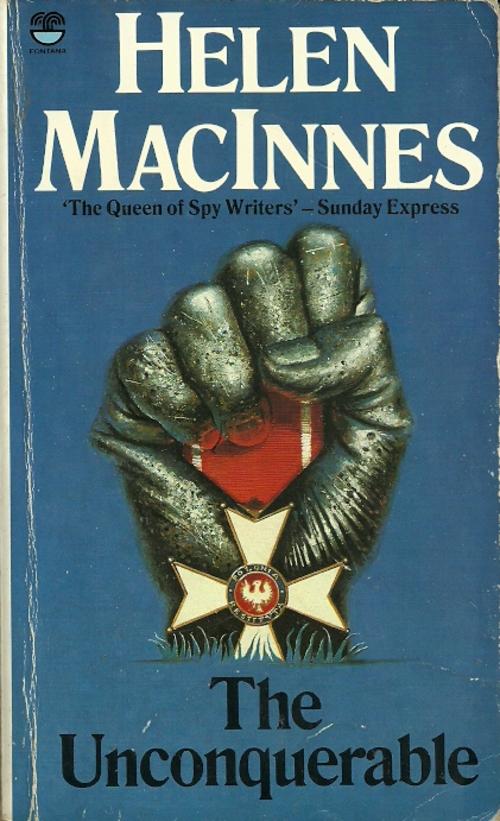
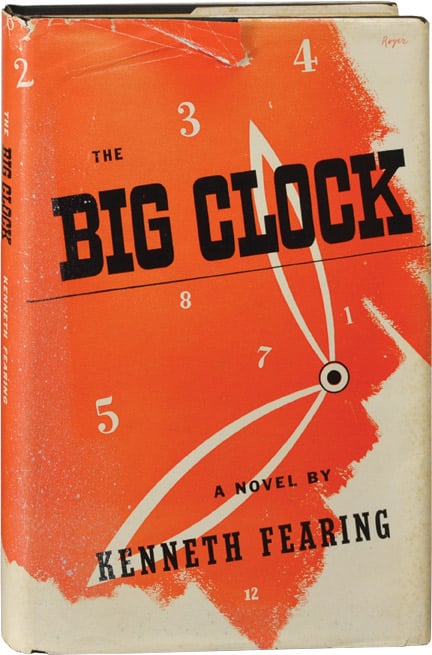
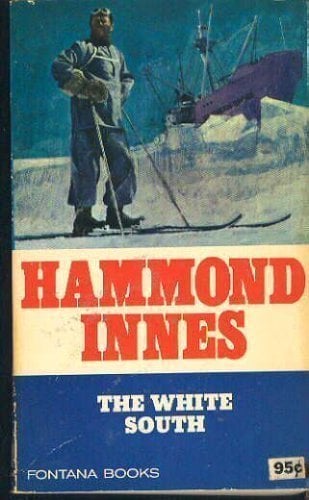
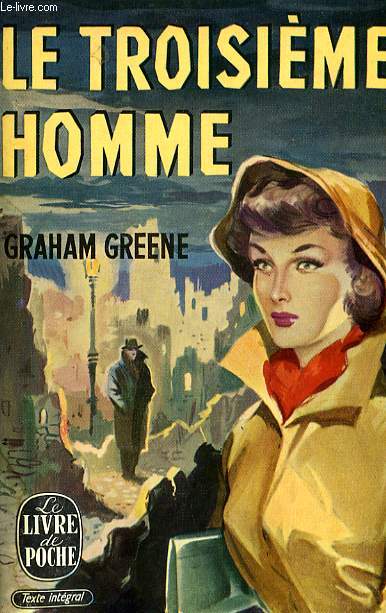
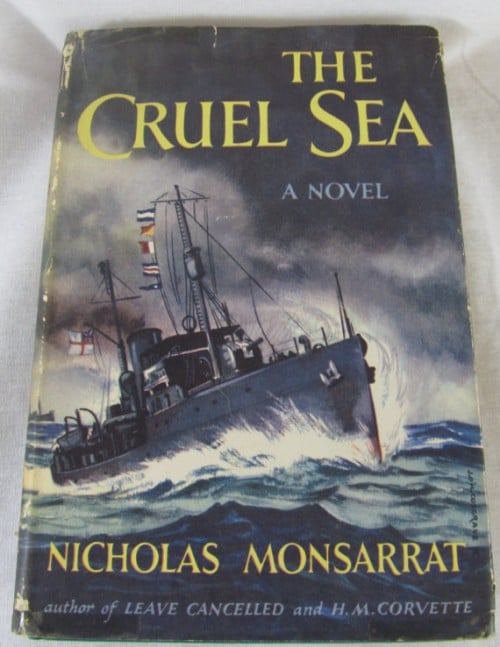
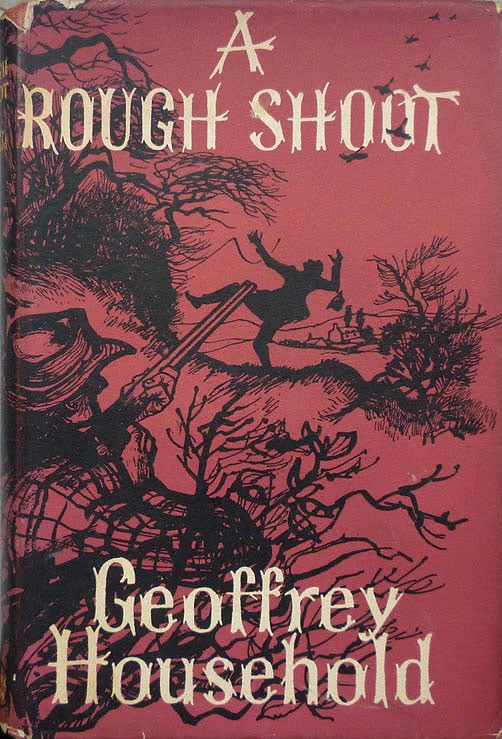
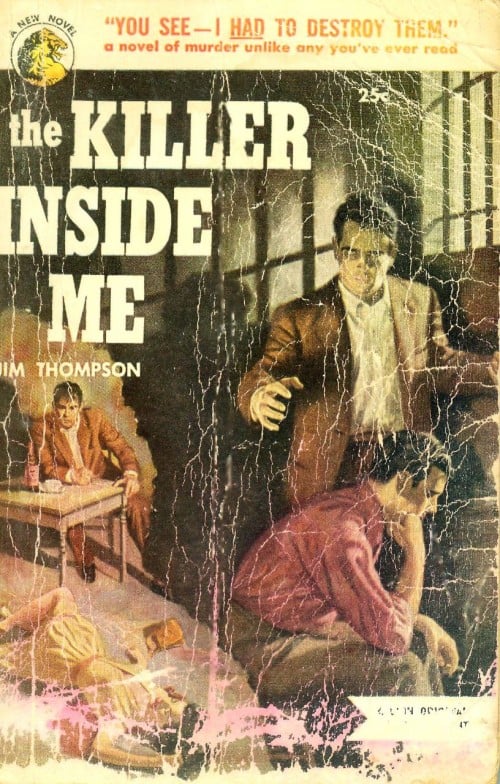
In chronological order:
- 1944. Astrid Lindgren’s YA adventure Pippi Longstocking.
- 1944. Cornell Woolrich’s’s noir crime adventure The Black Path of Fear.
- 1944. Christianna Brand’s crime adventure Green for Danger. It’s been called one of the 30 essential crime reads written by women in the last 100 years.
- 1946. William Lindsay Gresham’s crime adventure Nightmare Alley. Adapted into the excellent 1947 film noir of the same title. PS: Gresham’s wife, Joy Davidman, left him for C.S. Lewis.
- 1946. Henry Kuttner’s (or C.L. Moore’s?) fantasy adventure The Dark World, in which a wartime flyer is drawn into an alternate-reality Earth… and replaced by the ruthless Ganelon, a member of the Dark World’s ruling coven. Published in book form in 1965.
- 1946–48. Hergé’s Tintin adventure Prisoners of the Sun. Color album published in 1949.
- 1946–50. Maurice Richardson’s fantasy adventure story collection The Exploits of Engelbrecht, about a Dwarf Surrealist boxer’s bouts across time and space. Published in the British magazine Lilliput, the stories were collected as a book in 1950.
- 1946. Mervyn Peake’s fantasy adventure Titus Groan, first of the Gormenghast series. Peake was a well-known illustrator; his writing is wildly descriptive.
- 1947. Mickey Spillane’s crime adventure I, the Jury.
- 1948. Hammond Innes’s sea-going/jailbreak adventure Maddon’s Rock. The dedication, to his wife, reads: “You have fed me Treasure Island for years as the most exciting adventure story ever written. Well, this isn’t Treasure Island. But there is an island. And there is bullion. And it is an exciting adventure story.”
- 1948. Boris Vian’s crime adventure To Hell with the Ugly.
- 1948–50. Hergé’s Tintin adventure Land of Black Gold. Color album published in 1950.
- 1949. Victor Canning’s crime/hunted-man adventure The Golden Salamander. An archaeologist journeys to a tiny African port, where he stumbles upon a sinister secret. Culminating in a pretty excellent chase.
- 1949. W.R. Burnett’s heist adventure The Asphalt Jungle — made into the 1950 John Huston-directed movie.
- 1949. Jack Schaefer’s Western adventure Shane. About a young boy’s relationship with a former gunfighter who comes to work on his family’s farm and gets involved in the violent clash between the farmers and the cattlemen.
- 1949. Walter Van Tilburg Clark’s Western adventure The Track of the Cat. A symbolic depiction of the struggle between good and evil.
- 1949. Paul Bowles’s The Sheltering Sky, a cult classic of existentialism — and a sardonic inversion of the frontier adventure sub-genre.
- 1949. George Orwell’s dystopian science fiction adventure Nineteen Eighty-Four. In a totalitarian social order marked by omnipresent government surveillance, Ministry of Truth revisionist historian Winston Smith dreams of rebellion against “Big Brother.” His illicit romance with the mechanic Julia leads to Smith’s imprisonment, interrogation, torture, and re-education by the Ministry of Love’s Thinkpol. Not exactly an adventure…
- 1950. Ray Bradbury’s science fiction adventure collection The Martian Chronicles.
- 1951. Geoffrey Household’s adventure A Time to Kill. Aided by an ex-fascist, Roger Taine stalks the communist Russian agent who has kidnapped Taine’s sons. The action ends up in a Buchan-esque smuggler’s cave. Sequel to A Rough Shoot.
- 1951. Robert Heinlein’s science fiction adventure The Puppet Masters.
- 1951. C.S. Lewis’s Narnia fantasy adventure Prince Caspian.
- 1951. Michael Innes’s espionage adventure Operation Pax (The Paper Thunderbolt). A combination of chase novel, spy thriller, and academic mystery.
- 1952. C.S. Lewis’s Narnia fantasy adventure The Voyage of the Dawn Treader.
- 1953. Michael Innes’s comical adventure Christmas at Candleshoe.
- 1953. Jim Thompson’s crime adventure Savage Night.
- 1953. Richard Wright’s avenger-type adventure The Outsider, which concerns an African American man in Chicago whose mistaken identity and falsely reported death permit him to take up a new life in New York. There, he is manipulated by Communists into committing murder.
- 1953. Ira Levin’s crime adventure A Kiss Before Dying.
- 1953. Davis Grubb’s crime adventure The Night of the Hunter.
In chronological order:
- 1944. Nevil Shute’s WWII adventure Pastoral.
- 1944. Robert Graves’s mythological argonaut folly adventure Hercules My Shipmate. Known for his poetry, nonfiction studies of mythology, and the historical novel I, Claudius, the author’s best adventure novel is Hercules My Shipmate, which relates the story of Jason and the Argonauts.
- 1944. Craig Rice’s crime adventure Home Sweet Homicide.
- 1944. Ossie Davis’s WWII play Goldbrickers of 1944. Based on the author’s wartime experiences.
- 1944. Irwin Shaw’s WWII espionage play The Assassin. A wartime drama set in Algiers in 1942. Based on the actual assassination of the traitorous French admiral Jean-Louis Darlan.
- 1944. Eric Linklater’s YA adventure The Wind on the Moon.
- 1944. Harry Brown’s WWII adventure A Walk in the Sun, about an American Army platoon during the invasion of Italy.
- 1944. Anne Morrow Lindbergh’s aviation adventure Steep Ascent, in which an American woman and her husband, a pilot, make a perilous flight over the Alps.
- 1944. Samuel Shellabarger’s historical adventure Captain from Castile. Set during Cortés’s conquest of the Aztecs.
- 1945. Helen MacInnes’s adventure Horizon.
- 1945. C.S. Lewis’s science fiction adventure That Hideous Strength.
- 1945. Nevil Shute’s WWII adventure Most Secret, in which four British Navy officers launch a quixotic secret mission against Germany in a converted French fishing vessel, armed only with a flamethrower.
- 1945. C.S. Forester’s Horatio Hornblower historical sea-going adventure Commodore Hornblower, serialized. Published in book form in 1945. A middle-aged Hornblower participates in a naval engagement in the Baltic Sea.
- 1946. Jim Thompson’s Heed the Thunder (aka Sins of the Fathers).
- 1946. Nevil Shute’s historical (Viking) adventure Vinland the Good.
- 1946. Josephine Tey’s Inspector Grant crime adventure Miss Pym Disposes.
- 1946. Pat Frank’s science fiction adventure Mr. Adam.
- 1946. Errol Flynn’s (!) sea-going adventure Showdown.
- 1946. Edmund Crispin’s mystery adventure The Moving Toyshop.
- 1946. William Saroyan’s The Adventures of Wesley Jackson, a sardonic inversion of the genre that has been described as the first antiwar novel of WWII.
- 1946. Gore Vidal’s Williwaw, about the effects of an Arctic squall on the crew of an army transport ship in the Bering Sea.
- 1946. Hammond Innes’s adventure Dead and Alive.
- 1946. Frank Yerby’s historical adventure The Foxes of Harrow. The first in a string of bestsellers by the era’s most popular black novelist.
- 1946. C.S. Forester’s Horatio Hornblower historical sea-going adventure Lord Hornblower, serialized. Published in book form in 1946. Hornblower spends time ashore, and — like ships in dry dock do — begins to go to rot.
- 1947. Hammond Innes’s adventure Killer Mine.
- 1947. Boris Vian’s crime adventure The Dead All Have the Same Skin.
- 1947. Nevil Shute’s WWII adventure The Chequer Board.
- 1947. Hammond Innes’s adventure The Lonely Skier.
- 1947. Victor Canning’s adventure The Chasm. A man returns from WWII to a remote part of Italy, where he discovers a Nazi war criminal. The first of many thrillers from this prolific author, a friend of Eric Ambler and Hammond Innes.
- 1947. Italo Calvino’s adventure The Path to the Nest of Spiders.
- 1947. Samuel Shellabarger’s historical adventure Prince of Foxes.
- 1948. Hammond Innes’s adventure The Blue Ice.
- 1948. Victor Canning’s adventure Panthers’ Moon. The hero has placed vital government secrets inside the collar of a panther. It escapes into the Alps!
- 1948–50. C.S. Forester’s Horatio Hornblower historical sea-going adventure Mr. Midshipman Hornblower, serialized. Published in book form in 1950. Chronologically the first book (a collection of short stories) in the Hornblower series.
- 1948. Irwin Shaw’s WWII adventure The Young Lions.
- 1948. Fletcher Pratt’s fantasy adventure The Well of the Unicorn.
- 1948. Josephine Tey’s crime adventure The Franchise Affair. Her Inspector Grant character makes a brief appearance. It’s been called one of the 30 essential crime reads written by women in the last 100 years.
- 1948. Nevil Shute’s adventure No Highway.
- 1948. C.S. Forester’s atavistic adventure The Sky and the Forest, an adventure among the natives of the Congo.
- 1948. Edmund Crispin’s crime adventure Love Lies Bleeding. About the accidental discovery of Shakespeare’s long-lost play, Love’s Labour’s Won.
- 1948. Graham Greene’s adventure The Heart of the Matter.
- 1948. Norman Mailer’s WWII adventure The Naked and the Dead.
- 1948–50. Boris Vian’s crime adventure They Do Not Realize.
- 1949. Jim Thompson’s crime adventure Nothing More than Murder, the legendary pulp author’s first crime novel.
- 1949. George R. Stewart’s post-apocalyptic science fiction adventure Earth Abides. Regarded as a sf classic.
- 1949. Helen MacInnes’s adventure Rest and Be Thankful.
- 1949. Josephine Tey’s Inspector crime adventure Brat Farrar.
- 1949. John Hawkes’s WWII adventure The Cannibal. A nightmarish vision of occupied Germany as a plot is hatched to assassinate the lone American overseer.
- 1949. Robert Heinlein’s YA science fiction adventure Red Planet.
- 1949. Ross MacDonald’s crime adventure The Moving Target, the first Lew Archer mystery.
- 1949. Marguerite de Angeli’s YA historical adventure The Door in the Wall.
- 1950. Fritz Leiber’s fantasy adventure You’re All Alone.
- 1950. Mervyn Peake’s fantasy adventure Gormenghast, second of the Gormenghast series.
- 1950. Samuel Shellabarger’s historical adventure The King’s Cavalier.
- 1950. Michael Gilbert’s crime adventure Smallbone Deceased.
- 1950. C.S. Lewis’s Narnia fantasy adventure The Lion, the Witch, and the Wardrobe.
- 1950. Jack Vance’s fantasy/sf adventure The Dying Earth.
- 1950. Josephine Tey’s Inspector Grant crime adventure To Love and Be Wise.
- 1950. Edgar P. Jacobs’s Blake & Mortimer sci-fi espionage comic-book adventure The Secret of the Swordfish Volume 1: Ruthless Pursuit.
- 1950. Victor Canning’s espionage adventure A Forest of Eyes. An engineer working in Yugoslavia gets caught up in a web of espionage.
- 1950. Gore Vidal’s historical adventure A Search for a King, detailing the search for Richard the Lion-Hearted by the troubadour Blondel.
- 1950. Hammond Innes’s adventure The Angry Mountain.
- 1950. Mickey Spillane’s crime adventure My Gun is Quick.
- 1951. Nevil Shute’s adventure Round the Bend.
- 1951. Howard Fast’s historical adventure Spartacus. Reverberates with references to America under the threat of McCarthyism.
- 1951. John Dickson Carr’s fantasy adventure The Devil in Velvet.
- 1951. Desmond Cory’s Johnny Fedora espionage adventure Secret Ministry. Johnny Fedora is a British secret agent who was the protagonist of 16 novels. Fedora was dubbed the “thinking man’s James Bond.”
- 1951. Hammond Innes’s adventure Air Bridge.
- 1951. Josephine Tey’s Inspector Grant crime adventure The Daughter of Time. Really a novel about historical research… But a great read. Voted greatest mystery novel of all time by the Crime Writer’s Association in 1990. It’s been called one of the 30 essential crime reads written by women in the last 100 years.
- 1951. John Hawkes’s adventure The Beetle Leg. A surrealistic novel about a construction worked buried alive during the building of an irrigation dam.
- 1951. Andrew Garve’s espionage adventure Murder in Moscow.
- 1951. Truman Capote’s The Grass Harp is a kind of Robinsonade.
- 1951. L. Sprague de Camp’s fantasy adventure The Tritonian Ring.
- 1951. Helen MacInnes’s adventure Neither Five Nor Three.
- 1951. J.D. Salinger’s The Catcher in the Rye is a picaresque of sorts.
- 1951. Graham Greene’s adventure The End of the Affair.
- 1951. Herman Wouk’s WWII adventure The Caine Mutiny.
- 1952. Jim Thompson’s crime adventure Cropper’s Cabin.
- 1952. Ralph Ellison’s Invisible Man has some adventure elements.
- 1952. Josephine Tey’s Inspector Grant crime adventure The Singing Sands. Not one of her best.
- 1952. Bernard Wolfe’s science fiction adventure Limbo.
- 1952. Victor Canning’s treasure-hunt adventure The House of the Seven Flies.
- 1952. Margery Allingham’s crime adventure The Tiger in the Smoke. It’s been called one of the 30 essential crime reads written by women in the last 100 years.
- 1952. Pierre Boulle’s WWII adventure The Bridge over the River Kwai. British prisoners of war are forced by the Imperial Japanese Army to build a bridge. Construction of the bridge serves as a symbol of the preservation of professionalism and personal integrity to one prisoner, Colonel Nicholson.
- 1952. Hammond Innes’s adventure Campbell’s Kingdom.
- 1952. Nevil Shute’s adventure The Far Country. Not really an adventure — except in the Robinsonade sense.
- 1952–53. Hergé’s Tintin adventure Explorers on the Moon. Color album published in 1954.
- 1953. C.S. Lewis’s Narnia fantasy adventure The Silver Chair.
- 1953. Theodore Sturgeon’s science fiction adventure More Than Human.
- 1953. C.S. Forester’s Horatio Hornblower historical sea-going, treasure-hunting adventure Hornblower and the Atropos, serialized. Published in book form in 1953. The lightest in tone of Forester’s Hornblower adventures.
- 1953. Raymond Chandler’s crime adventure The Long Goodbye. His last major novel and his most ambitious work.
- 1953. Leigh Brackett’s fantasy/sf adventure The Sword of Rhiannon. Matt Carse, an archaeologist from Earth, has become a thief and adventurer on ruined, mysterious Mars. When he plunders the tomb of an ancient Martian god, he is possessed by Rhiannon — and cast back thousands of years in time, to an era when Mars was still covered in oceans.
- 1953. Ian Fleming’s James Bond espionage adventure Casino Royale.
- 1950–52. Hergé’s Tintin adventure Destination Moon. Color album published in 1953.
- 1953. Louis L’Amour’s Western adventure Hondo, the author’s first popular success. Many regard it as his best novel and a classic of the genre.
- 1953. Hal Clement’s science fiction adventure Mission of Gravity. Published in book form in 1954.
- 1953. Alejo Carpentier’s The Lost Steps. A composer, fleeing an empty existence in New York City, takes a journey with his mistress to one of the few remaining areas of the world not yet touched by civilization — the upper reaches of a great South American river.
- 1953. Alain Robbe-Grillet’s The Erasers (Les Gommes), the author’s first novel. The novel superficially resembles a detective novel, but it contains within it a deeper structure.
- 1953. Edgar P. Jacobs’s Blake & Mortimer sci-fi espionage comic-book adventure The Secret of the Swordfish Volume 2: Mortimer’s Escape.
- 1953. Arthur C. Clarke’s science fiction adventure Childhood’s End.
- 1953. Edgar P. Jacobs’s Blake & Mortimer sci-fi espionage comic-book adventure The Secret of the Swordfish Volume 3: SX1 Counterattacks.
- 1953. Nevil Shute’s In The Wet has atavistic adventure aspects.
- 1953. Ward Moore’s science fiction adventure Bring the Jubilee.
- 1953. Ernest K. Gann’s aviation adventure The High and the Mighty, which set the groundwork for highly technical disaster novels.
- 1953. Jim Thompson’s crime adventure Recoil.
- 1953. Frederik Pohl and Cyril M. Kornbluth’s science fiction adventure The Space Merchants.
- 1953. Helen MacInnes’s adventure I and My True Love.
- 1953. Jim Thompson’s crime adventure The Alcoholics.
- 1953. Victor Canning’s crime/seafaring adventure The Man from the “Turkish Slave”.
- 1953. Charles L. Harness’s science fiction adventure The Paradox Men.
- 1953. Jim Thompson’s crime adventure Bad Boy.
- 1953. Saul Bellow’s The Adventures of Augie March is a sardonic inversion of the genre.
- 1953. Jim Thompson’s crime adventure The Criminal.
- 1953. Clifford D. Simak’s science fiction adventure Ring Around the Sun.
- 1953. John Wyndham’s science fiction adventure The Kraken Wakes.
BEST ADVENTURE LIT: Best 19th Century Adventure (1805–1903) | Best Nineteen-Oughts Adventure (1904–1913) | Best Nineteen-Teens Adventure (1914–1923) | Best Twenties Adventure (1924–1933) | Best Thirties Adventure (1934–1943) | Best Forties Adventure (1944–1953) | Best Fifties Adventure (1954–1963) | Best Sixties Adventure (1964–1973) | Best Seventies Adventure (1974–1983). I’ve only recently started making notes towards a list of Best Adventures of the Eighties, Nineties, and Twenty-Oughts.
ADVENTURERS as HILO HEROES: Katia Krafft | Freya Stark | Louise Arner Boyd | Mary Kingsley | Bruce Chatwin | Hester Lucy Stanhope | Annie Smith Peck | Richard Francis Burton | Isabella Lucy Bird | Calamity Jane | Ernest Shackleton | Osa Helen Johnson | Redmond O’Hanlon | Gertrude Bell | George Mallory | Neta Snook | Jane Digby | Patty Wagstaff | Wilfred Thesiger | Joe Carstairs | Florence “Pancho” Barnes | Erskine Childers | Jacques-Yves Cousteau | Michael Collins | Thor Heyerdahl | Jean-Paul Clébert | Tristan Jones | Neil Armstrong
MORE FURSHLUGGINER THEORIES BY JOSH GLENN: TAKING THE MICKEY (series) | KLAATU YOU (series intro) | We Are Iron Man! | And We Lived Beneath the Waves | Is It A Chamber Pot? | I’d Like to Force the World to Sing | The Argonaut Folly | The Perfect Flâneur | The Twentieth Day of January | The Dark Side of Scrabble | The YHWH Virus | Boston (Stalker) Rock | The Sweetest Hangover | The Vibe of Dr. Strange | CONVOY YOUR ENTHUSIASM (series intro) | Tyger! Tyger! | Star Wars Semiotics | The Original Stooge | Fake Authenticity | Camp, Kitsch & Cheese | Stallone vs. Eros | The UNCLE Hypothesis | Icon Game | Meet the Semionauts | The Abductive Method | Semionauts at Work | Origin of the Pogo | The Black Iron Prison | Blue Krishma! | Big Mal Lives! | Schmoozitsu | You Down with VCP? | Calvin Peeing Meme | Daniel Clowes: Against Groovy | The Zine Revolution (series) | Best Adventure Novels (series) | Debating in a Vacuum (notes on the Kirk-Spock-McCoy triad) | Pluperfect PDA (series) | Double Exposure (series) | Fitting Shoes (series) | Cthulhuwatch (series) | Shocking Blocking (series) | Quatschwatch (series)
READ MORE essays by Joshua Glenn, originally published in: THE BAFFLER | BOSTON GLOBE IDEAS | BRAINIAC | CABINET | FEED | HERMENAUT | HILOBROW | HILOBROW: GENERATIONS | HILOBROW: RADIUM AGE SCIENCE FICTION | HILOBROW: SHOCKING BLOCKING | THE IDLER | IO9 | N+1 | NEW YORK TIMES BOOK REVIEW | SEMIONAUT | SLATE
